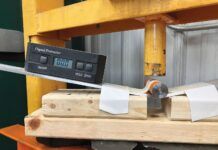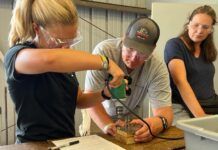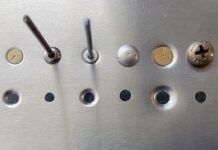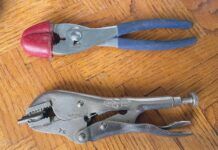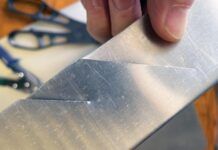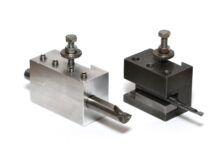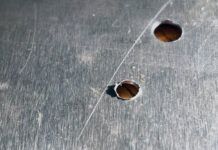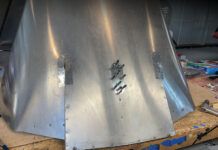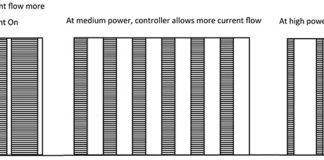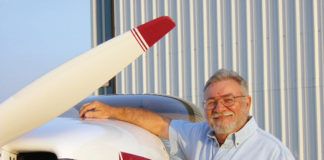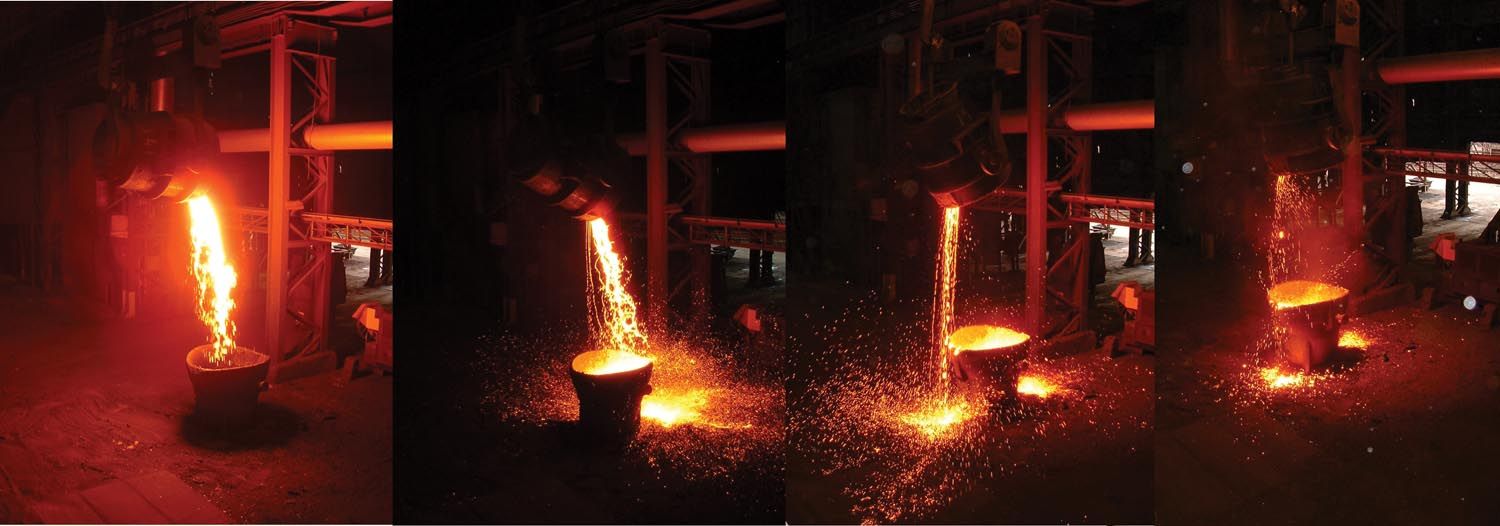 Stainless steel is an interesting material. Most of my kitchenware is stainless steel and it works great. Many medical instruments are made of it, too. Why? Sanitization is less difficult and it is an industrial requirement.
Stainless steel is an interesting material. Most of my kitchenware is stainless steel and it works great. Many medical instruments are made of it, too. Why? Sanitization is less difficult and it is an industrial requirement.
Nonetheless, I am not a particular fan. People seem to think this material is so wonderful, shiny and pretty that it does not corrode. It does, though, both from the inside and the outside, if the proper manufacturing guidelines are not followed or well maintained, so proper selection of the correct material for the specific application is of vital importance.

Select the wrong material for an application, and it will become part of a collectors item on a shelf. In all my years as a mechanical design engineer, I had avoided specifying stainless steel for various reasons. Yet stainless steel has touched every part of industry from art to transportation, including aviation. It has been used for everything from oil coolers and processing equipment to engine parts and firearms and even firewalls.
What It Is
Stainless steel is a derivative of steel, and according to the American Iron and Steel Institute (AISI): “A steel is called stainless when it contains 4% or more chromium.” So in order to be considered corrosion-resistant steel, it must have higher percentages of chromium, usually 10% or better added to low-carbon steel. Chromium and nickel alloys keep stainless steel from corroding and provide strength at higher temperatures. Adding chromium to stainless steel increases hardness, strength and corrosion resistance. Nickel (similar to chromium), when added to stainless steel, has a similar function but also adds hardness without sacrificing ductility and toughness. It also reduces thermal expansion. Other materials such as alloy steel 4130 contains no nickel and is 0.75-1.20% chromium. Aluminum 2024-T3 and 7075-T6 contain no nickel; however, 7075-T6 does contain 0.23% chromium, while some other aluminum does contain nickel.
The earliest record of corrosion-resistant material was the Iron Pillar of Delhi, an iron artifact, circa AD 400. It is high in phosphorus content, which along with ideal weather conditions, created a solid protective passivation layer of iron oxides and phosphates. In 1821, a French metallurgist, Pierre Berthier, recommended corrosion-resistant material for application in cutlery. From 1904 to 1911, French researcher Leon Gillet arranged alloys that would be thought of today as stainless steel. In 1911, a German, Philip Monnartz, documented the association between chromium and the corrosion resistance of these alloys. By 1913, in Sheffield, England, metallurgist Harry Brearly, at Brown-Fifth research laboratory, was dubbed the inventor of stainless steel while he was searching for a corrosion-resistant alloy for gun barrels, which led to martensitic stainless. At the same time, in Germany, at Krupp Iron Works, Eduard Maurer and Benno Strauss created austenitic alloy, and in the United States, Christian Dantsizen and Frederick Becket created the ferritic stainless.
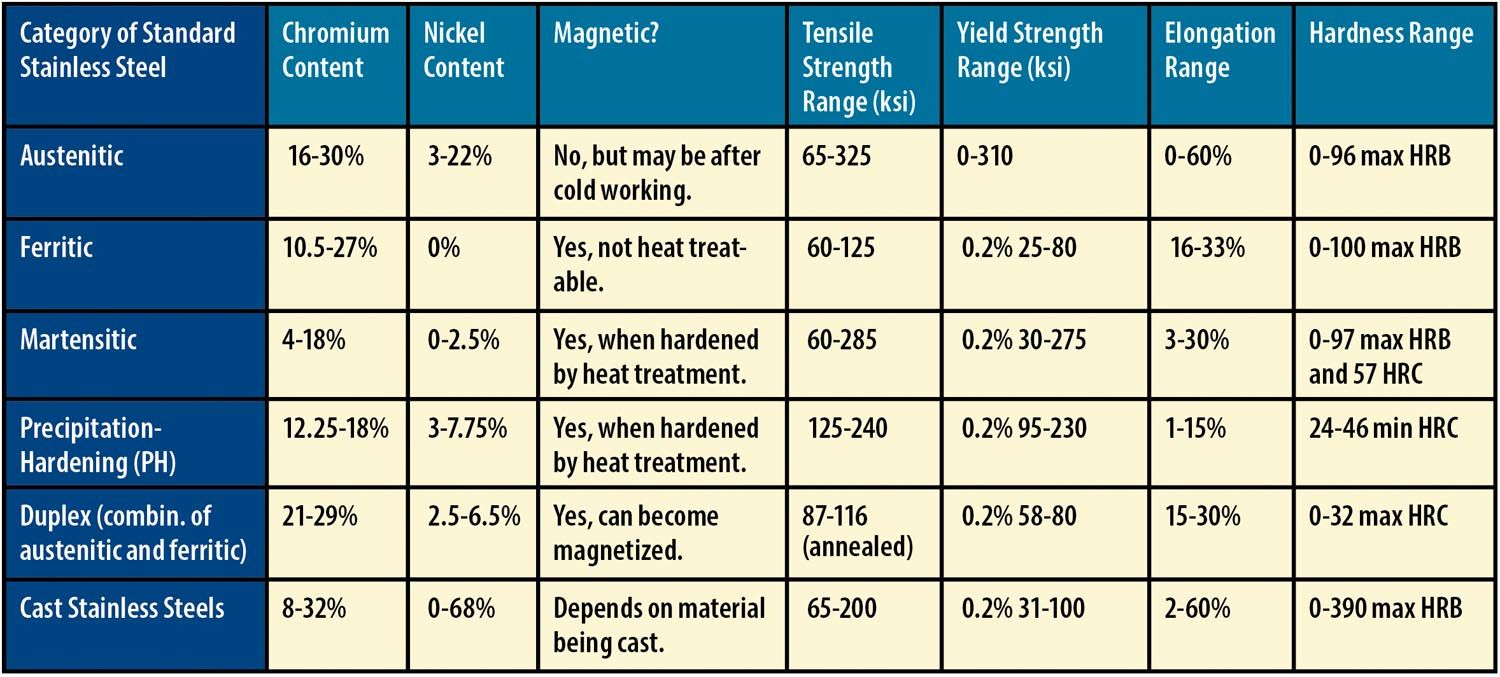
The categories of standard stainless steel are: Austenitic (200 and 300 series); Ferritic (400 series); Martensitic (400 and 500 series); Precipitation-hardening (PH); Duplex; Cast stainless steels; and Specialty stainless steels. (Although not all categories of the material allow it, stainless steel is available in round, hexagon, square, flat, strip, sheet, plate, tubing, wire, foil and pipe shapes. It can be forged, cold formed, machined, welded, brazed and cast with limitation in each category.) Table 1 shows the materials and their characteristics. (Ksi is Kips per square inch, a measurement of stress intensity. HRB and HRC are measurements on the Rockwell Hardness scale. There are tests for different materials, including the Rockwell B [HRB] and Rockwell C [HRC] tests.)
There are three other groupings of stainless steel. The compositions of nonstandard stainless steels and heat- and corrosion-resistant alloy steels include austenitic, ferritic, martensitic and precipitation-hardening. The last group is high-nitrogen austenitic stainless steel. For obvious reasons, magnetic stainless steel must be kept well away from aircraft instruments.
The application of stainless steel in aviation is to make things look pretty and, supposedly, to be corrosion resistant. The material is fairly non-functional structurally, unless high-end stainless steel is used. Like the old saying goes, “If it doesn’t move and you’re not sure what it is, chrome it.” Or in this case, if it looks great for advertising, use stainless steel. There are guidelines about proper application/uses for stainless steel in certain components for aviation, but what it really boils down to is cost.
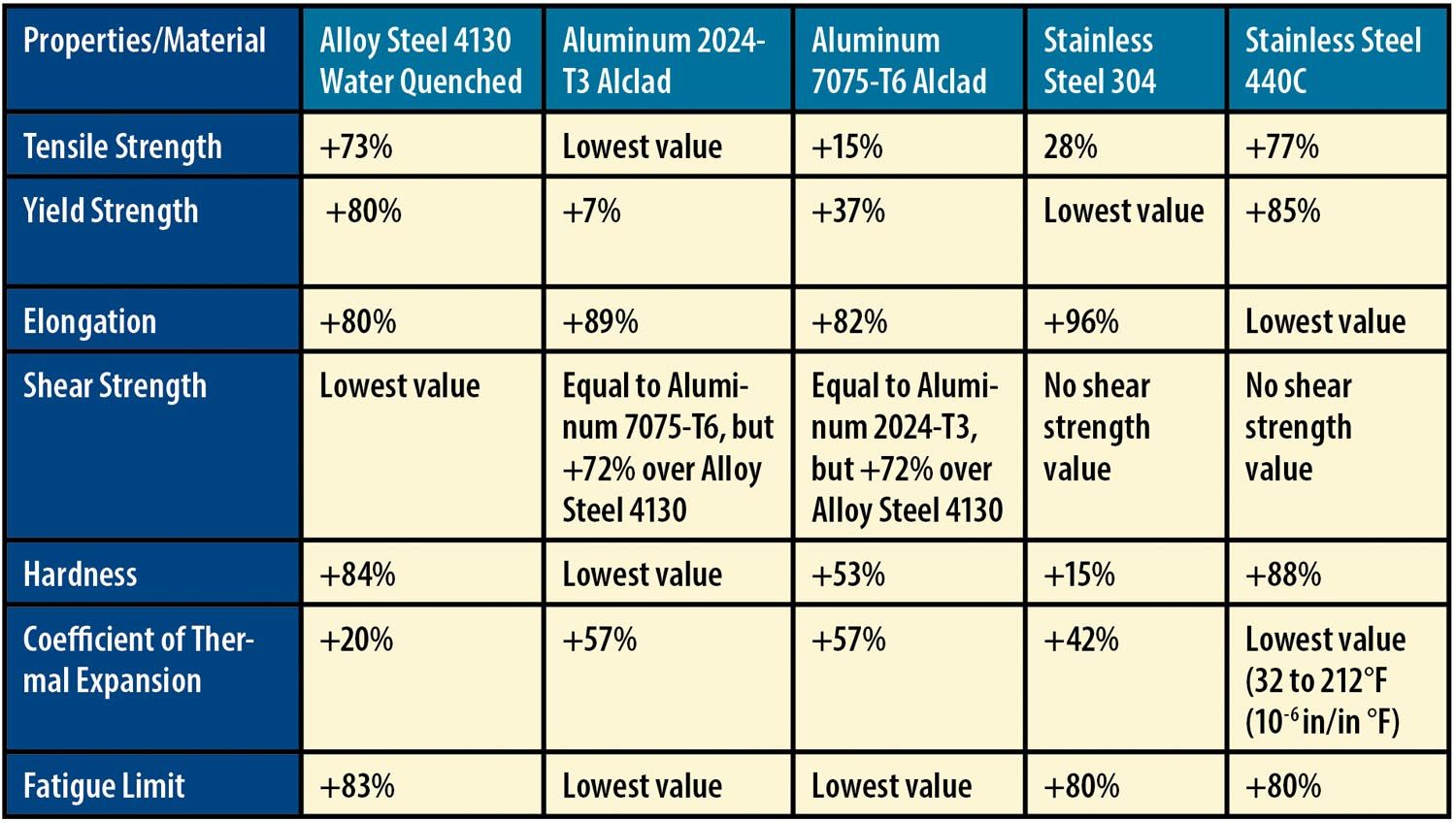
*Percentages represent increases over lowest value in the category.
Analysis of Mechanical Properties
What follows is a comparative analysis of some common materials: alloy steel 4130 water-quenched, aluminum 2024-T3 Alclad and 7075-T6 Alclad, stainless steel 304 and 440C. All are typically used in aviation.
Alloy steel and stainless steel are 66% heavier than aluminum. However, in strength-to-weight ratio comparison, stainless steel 304 has the least strength-to-weight ratio, with a 54% increase for aluminum 2024-T3, a 60% increase for aluminum 7075-T6, a 63% increase for alloy steel 4130, and a 70% increase for stainless steel 440C over stainless steel 304. Table 2 shows the comparison of each material for each property. But first, some definitions.
Tensile strength: The maximum stress that a material can endure without tearing.
Yield Strength and Elasticity: When a material bearing a load is permanently deformed, this is known as yield strength and the yield up to this point is known as elasticity. Elasticity allows the material to return to the original shape after the load is removed. Alloy and stainless steel have 63% greater elasticity than aluminum.
Elongation: When the material lengthens to a particular point before fracture occurs.
Shear Strength: The maximum load a material can endure before it splits apart; each part will slide past the other.
Hardness: The capacity of a material to oppose scratching or indention.
Coefficient of Thermal Expansion: As material is heated, the material expands. (Some material also shrinks under higher temperatures.) Nonetheless, this linear expansion is known as the Coefficient of Thermal Expansion.
As the temperature increases, the strength of the material decreases. Data on stainless steel was unavailable, but the next comparable material in the martensitic category is 416. This material loses its tensile strength by 33% when the temperature is elevated to 1000 F. Alloy steel 4130 loses its tensile strength by 49% at 1000F, and stainless steel 304 loses 78% of its tensile strength. Aluminum 2024-T3 and 7075-T6 lose as much as 92% of tensile strength when the temperature is elevated to 700 F.
Fatigue Limit: When a load is applied to a material (maximum stress) whether in a steady or unsteady state, repeatedly, without breaking, this is known as fatigue or endurance limit.
Analysis of Fasteners
Let us take this comparative analysis a step further by performing a comparison on fasteners, using a NAS 1352 socket head cap screw alloy steel ASTM A574 and a stainless steel ASTM F837.
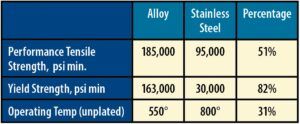
Table 3 reveals that alloy steel is stronger in tensile and yield strength, whereas stainless steel is better at handling the temperature for this particular type of fastener. Shear strength is not listed because it varies with the diameter of the fastener. As an example, however, Number 10 fastener alloy steel is 3225 pounds minimum versus stainless steel at 1280 pounds minimum in single shear strength of the body, equaling less than 60% in single shear strength to alloy steel. Taking this example even further, a 10-32x.500 fastener costs 73% more in stainless steel with less strength, but with a 69% greater operating temperature. You can draw your own conclusions, but when was the last time you operated an aircraft at 550 to 800 F and walked away from it? Granted, the engine gets this hot or hotter.
Cost Comparison
Here is where the real adventure begins: How much will your choice damage your pocketbook? The lowest price in this analysis of material is for 4130 steel. Using this as a datum point, the cost for raw uncertified material increases by the following:
- Aluminum 2024 40%
- Aluminum 7075 42%
- Stainless Steel 304 37%
- Stainless Steel 440C 80%
As the requirement for more strength at higher temperature and/or corrosion resistance of the material increases, the cost of the material will spiral upward and will not stall out.
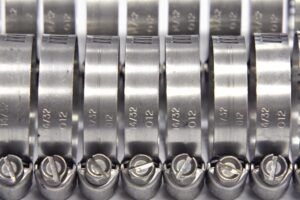
Machining
Last but not least, we come to the heart of the matter. What drives the cost up more than anything else? Machining. Surface cutting speeds, feet per minute, are based on Carbon Steel 1212 (ASTM A108) as 100%. The example below demonstrates how long machining will take to cut the material. Notice how difficult stainless steel is to machine. The value to the right of the cutting speeds/column per feet percentage is the sulfur content, which makes the material either easier or more difficult to machine.
- Steel Alloy 4130 (annealed): 72% (.040)
- Stainless Steel 304 (annealed): 45% (.030)
- Stainless Steel 440C (annealed): 40% (.030)
- Aluminum 2024: 360%
- Aluminum 7075: 360%
According to a friend who is a retired machinist, stainless steel is difficult to work with. He does not like the material, nor does an A&P friend. Aluminum, on the other hand, is easy to machine until it has been heat-treated.
Stainless steel weldability varies from none to excellent, depending on the type. Like every metal out there, stainless steel is not excluded from the problems that occur in welding, such as cracks and distortion. The loss of corrosion resistance, however, could also occur during welding, and corrosion will occur at the welds (joints). Welding costs more because stainless steel is difficult to weld when compared to steel because of the added requirements for cleaning and pre-machining to create a weldable surface that will not corrode.
Corrosion
As mentioned, corrosion is a possibility in stainless steel and it comes in many forms. Among them are: galvanic corrosion, pitting, crevice corrosion, weld decay and knifeline attack, rouging, intergranular corrosion, stress corrosion cracking, sulphide stress cracking, contact corrosion, uniform corrosion and galling.
The most recognizable type of corrosion is galvanic corrosion, which occurs when two dissimilar materials are placed together. A good example of this is when there are stainless-steel fasteners on an aluminum panel. These would corrode quickly. A common way to avoid galvanic corrosion is with a physical barrier that prevents metals from rubbing against each other. This can be in the form of washers, gaskets or a protective coating, known as a finish, or some type of lubricant.
Another problem with stainless steel is galling. This typically happens when using stainless steel fasteners at high torque, which causes the oxide surface film on the stainless steel to lose its integrity through contact with another metal, resulting in surface damage and seizing.
Finishes and Passivation
The typical categories for stainless-steel finishes are hot-rolled, cold-rolled and mechanically polished, which can have several different finishes including polished, unpolished, brushed, mirror-like, reflective, passivated, ground, adhesive-backed and non-stick PTFE-coated. Most of us are familiar with these, along with a wide range of color finishes. Passivation is a treatment to help improve corrosion-resistant parts made of austenitic, ferritic, martensitic and precipitation-hardening steel. The federal specification is QQ-P-35C, which has several types of treatment.
Polishing stainless steel after machining helps keep the material from rusting, but the material is high maintenance, requiring preventive steps such as waxing for upkeep. Alloy steel and aluminum have a wide range of finishes, more than stainless steel. These materials can be treated for corrosion resistance as well as for temperature resistance.
Conclusion
We know there is not one wonder material that does everything. Different materials are used for different applications. Looking at all of the materials
mentioned in this article, and rating them for best condition yields the following conclusions.
Aluminum is the lightest material and has the highest shear strength value.
4130 and 440C have the highest strength-to-weight ratios, highest tensile strength, highest yield strength values, highest hardness, and lowest coefficient of thermal expansion values.
- 4130 and stainless steel have the highest elasticity and the highest fatigue limits.
- 2024-T3 and 304 have the highest elongation values.
- 4130 and 416 have the lowest tensile strength losses at elevated temperature.
- The least expensive material is 4130, and the most expensive is 440C.
- The easiest materials to machine are aluminum and 4130.
Notice that of the materials listed, alloy steel 4130 stands out as superior to the others. The reality behind stainless steel is that the lower grades do not live up to the hyperbole. Different stainless steels have different mechanical properties, depending on how costly they are, just like any other material. For example, if one were to compare 304 to 440C stainless steel, 304 has more chromium and nickel content over 440C, yet 440C is the better of the two in mechanical properties, and that comes at a price.
If the requirements are for high temperatures with a corrosive (wet) environment, then the extra dollars may be spent on heat- and corrosion-resistant alloy steels or high-nitrogen austenitic stainless steel. Otherwise, it is a waste of money that would be put to better use in other areas.
Proper selection of the material for any project is far more important than looks or claims that the material does not corrode. Each material has its place. Any metal can be made to look pretty by use of a coating, and it can be corrosion-free if proper preventive maintenance is done. Selection of material based on application is the key issue here, not appearance. There are plenty of examples out there today if you look around and are observant.


